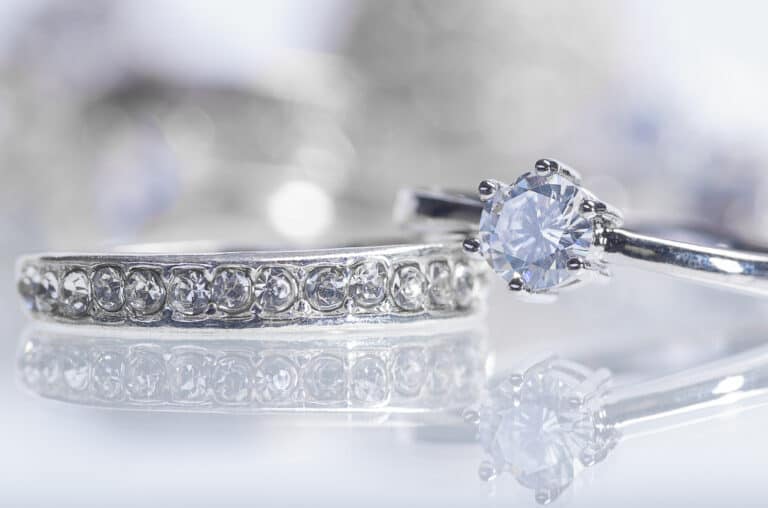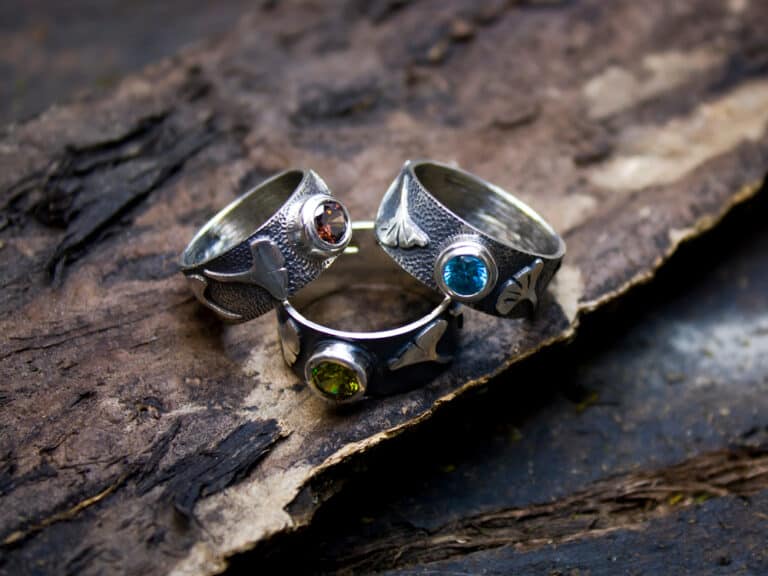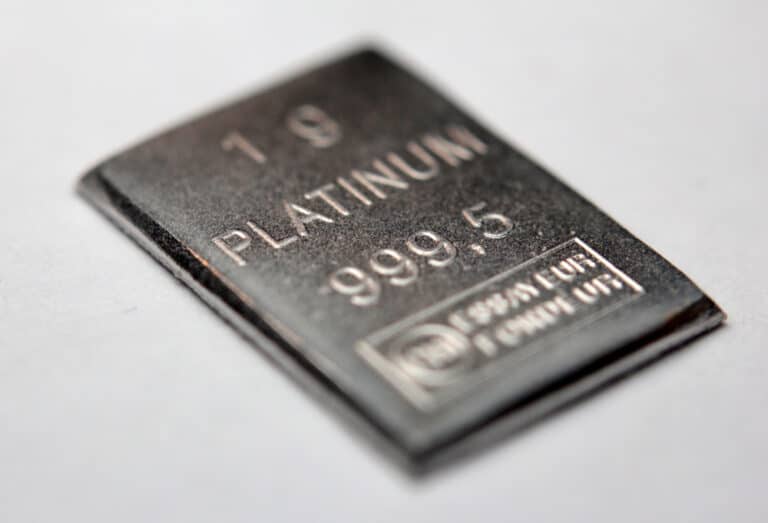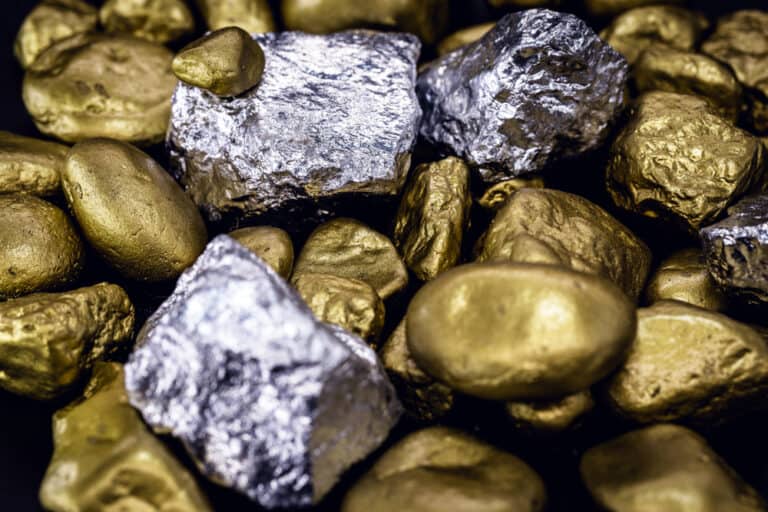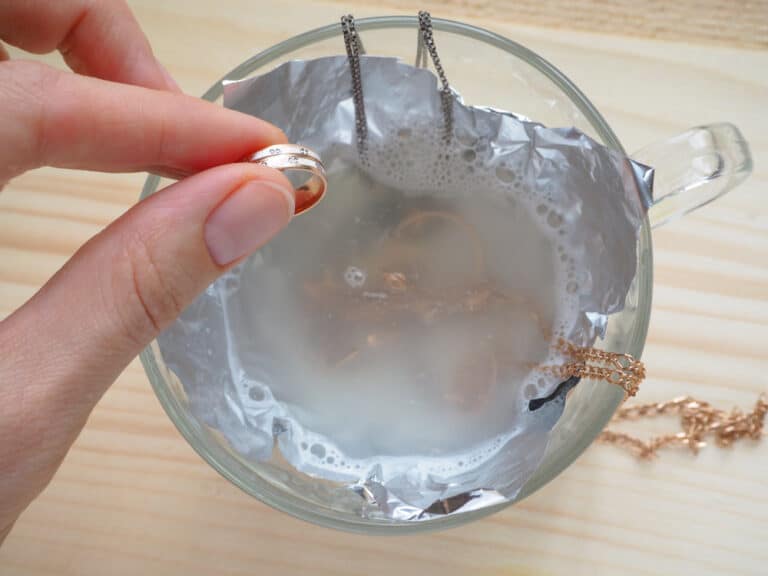If you’ve ever paid close attention to the markings on silver pieces, you may have noticed different numbers like 925 and 999. Have you ever wondered what the marking on silver pieces means? What exactly is the difference between 925 and 999 silver?
925 Silver means that the piece consists of 92.5% silver, whereas 999 silver is 99.9% silver and contains 0.1% impurities. However, the remaining 7.5% of 925 silver is not impurities but rather other metals purposely added to the silver to alter its properties to increase or change its uses.
Each marking has a different meaning; they are not there for aesthetic reasons. There are some crucial differences between 925 and 999, and these differences will determine the silver’s uses. Let’s look at 925 and 999 silver and see how they compare.
925 Silver Vs. 999: What’s The Difference?
Silver is a metal found all over the world. Some of the best countries for silver mining include Mexico, Peru, Australia, Poland, Bolivia, and Turkey.
On the periodic table, silver has an atomic value of 47. The properties of silver make it a useful metal in several applications. Silver is resistant to corrosion, acid, and heat. It is also one of the best conductors of electricity and heat.
Silver is used in the following industries:
- Jewelry and watchmaking
- Photography
- Medical equipment like dental alloys
- Investing
- Consumer products
- Electrical contacts and circuits
- Coinage
- Furnishing (ornamental pieces and cutlery)
One of the less desired properties is the metal’s reactivity with sulfur. The reaction creates a discoloration called tarnish. For this reason, silver is often mixed (alloyed) with other metals.
Silver standards represent the amount of silver in an alloy, also called the millesimal fineness. The higher the percentage of silver in the alloy, the purer the silver.
Silver of different standards (with different number markings or hallmarks) may have different characteristics and is often used differently. Let’s take a detailed look at the difference between 925 and 999 silver.
Composition And Processing Of 925 Silver Vs. 999 Silver
While 925 and 999 are similar in appearance, their chemical composition sets them apart and gives each their defining attributes. These two types of silver are processed differently to achieve their desired composition.
The Composition Of 999 Silver
999 Silver is also called three nines or fine silver. The alloy contains 99.9% pure silver and only 0.1% impurities.
While fine silver is not 100% pure, it is considered pure silver. Refining it further to remove the trace amounts of remaining impurities is too expensive. Therefore, 999 silver is the purest form of silver available.
What Is The Composition Of 925 Silver?
925 Silver is composed of 92.5% silver and 7.5% other metals. Unlike 999 silver, the other 7.5% of the alloy is not impurities but added purposefully to bring strength and other qualities to the alloy.
Copper is the most common metal added to 925 silver. This type of 925 silver is called sterling silver, and it is the most common type of silver. Argentium silver is another type of sterling silver but has a slightly higher silver content (93%). A small amount of germanium, about 1%, is added to the silver and copper alloy to create a silver that is stronger and whiter than sterling silver.
Do 925 And 999 Silver Have Different Uses?
As 925 and 999 silver are processed differently and, thus, have different compositions, it is safe to assume that they are used differently.
What Is 925 Silver Used For?
925 Silver has a variety of uses. Since other metals are added to the alloy to balance the negative attributes of pure silver, it is more suitable for general use.
During the high middle ages, 925 silver was used as currency. Decorative and ornamental small furnishing was also common, including tea sets, cutlery and crockery, and other silverware.
Nowadays, 925 silver is mostly used for jewelry. The copper in the alloy makes sterling silver strong enough for every day, moderate-wear jewelry pieces. 925 Silver jewelry is inexpensive and can be handcrafted into intricate designs.
What Is 999 Silver Used For?
999 Silver is expensive to produce and unsuitable for common use. Three nines silver is mostly cast into bullion bars and coins and used for trade and investment. It’s a less expensive investment than gold, making it wonderful addition to any investor portfolio and more attainable for beginner investors.
925 Silver Vs. 999: Which Is Better For Jewelry?
Silver, in its purest form, is pliable. While this makes it easy to shape silver into intricate jewelry pieces, it will also scratch easily.
As 999 silver has an incredibly high percentage of silver in the alloy, it is too soft to be used as jewelry. 925 silver, on the other hand, contains copper or germanium that strengthens the metal, making it suitable for jewelry and watches.
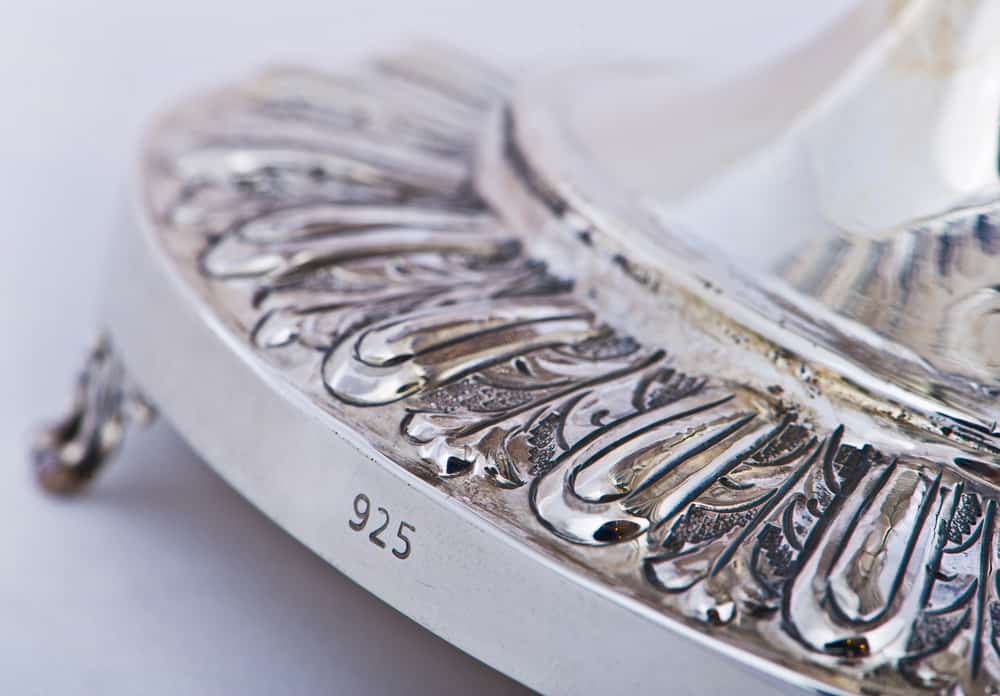
Are There Other Types Of Silver Than 925 And 999?
Since the discovery and smithing of silver, silver smiths have experimented with the ratio of silver and copper or other metals. Each country developed its alloy best suited to its smithing techniques and uses.
Some of the different silver alloys are illustrated below:
| Name | Silver Number (Marking) | Alloy | Uses |
|---|---|---|---|
| French 1st Standard Silver | 950 | 95% silver 5% copper | Decorative arts Furniture (for the wealthy only) Cutlery and tea sets Jewelry |
| 91 Zolotnik Russian Silver | 947 | 94.79% silver 5.21% copper | Currency |
| Coin Silver | 900 | 90% silver 10% copper or other metals | Tableware Currency |
| European Silver | 800 or 835 | 80% silver 20% copper or other metals or 83.5% silver | Currency during High Middle Ages |
| Scandinavian Silver | 830 | 83% silver 17% copper | Currency during the Viking Age Jewelry |
| Decoplata | 720 | 72% silver | Currency |
| Britannia Silver | 958 | 95.84% silver 4.16% copper | Replaced sterling silver in silver plate |
Is 999 Silver The Same As 9999 Silver?
999 and 9999 silver are both considered pure silver. The only difference between 999 and 9999 silver is the refining process.
999 silver, or three 9s silver, contains only 0.1% trace metals. 9999 silver goes through an additional step of refining to remove a further 0.09% impurities, resulting in a silver that is 99.99% pure. 9999 silver is the purest form of silver available today.
999 silver is called fine silver, while 9999 silver is called ultrafine silver. Both pure silvers are used for bullion coins and bars. Ultrafine silver is also used in medical applications where silver’s properties are important.
What Is The Best Quality Silver?
“The best” is often subjective, and silver quality is no different. There is no one answer for determining the best quality silver.
For jewelry, 925 silver is best. The pure silver percentage in the alloy is perfect for highlighting the appealing qualities of silver, like its brilliant white luster and resistance to harmful elements. The copper or other metals added compensate for silver’s softness and make it strong enough for jewelry.
Argentium silver is the best 925 silver for jewelry, although it is more expensive than sterling silver.
Fine silver is the best for investments. The silver itself is valuable for investments, so the higher the millesimal fineness, the more valuable the investment piece.
However, if the best quality refers to the purest form of silver, then 9999 (ultrafine) is the absolute best silver you can find.
Conclusion
Silver is a remarkable metal with appealing qualities that gives it multiple uses. Purer silver, like 999 silver, is a great investment, but if you are looking for a silver jewelry piece, you can’t go wrong with sterling silver. Although it does scratch, it is easy to care for and not too expensive to replace if lost.
References
- https://www.news9.com/story/5e8cf9d4fa8ed3749a62c865/the-different-types-of-silver-to-know-about-before-buying-jewelry
- https://www.americangemsociety.org/precious-metal-jewelry/
- https://www.linkedin.com/pulse/difference-between-silver-925-999-katrina-lan/
- https://www.quora.com/How-does-999-fine-silver-differ-from-925-silver
- https://www.silverinstitute.org/
- https://en.wikipedia.org/wiki/Silver_standards
- https://www.britannica.com/technology/silver-processing

